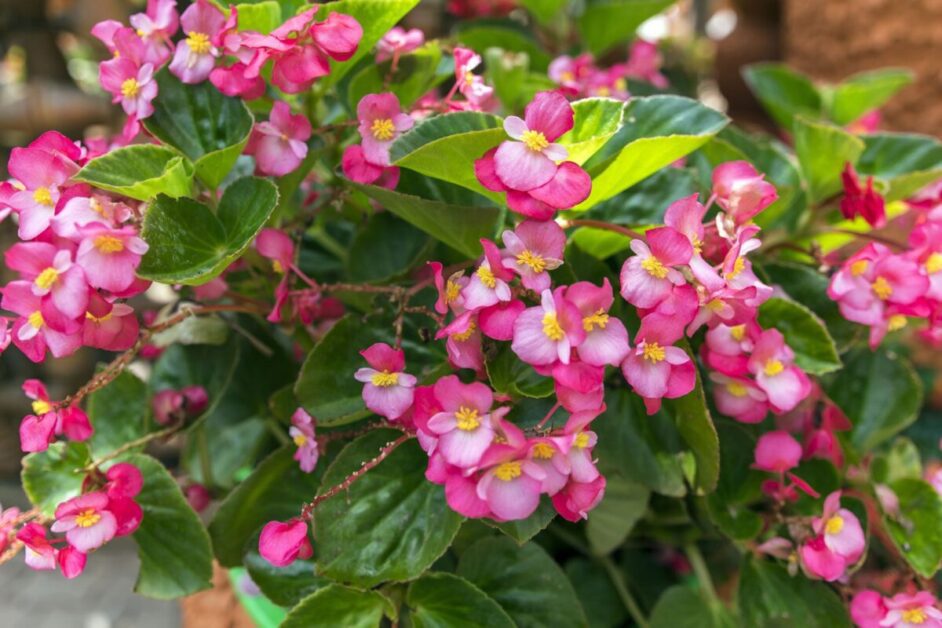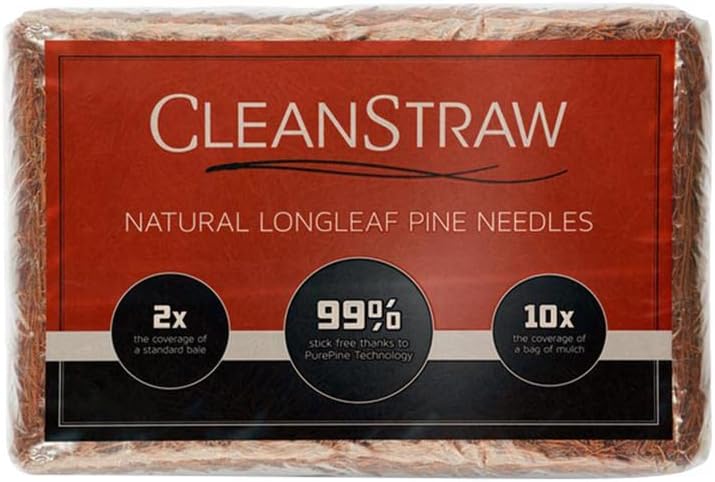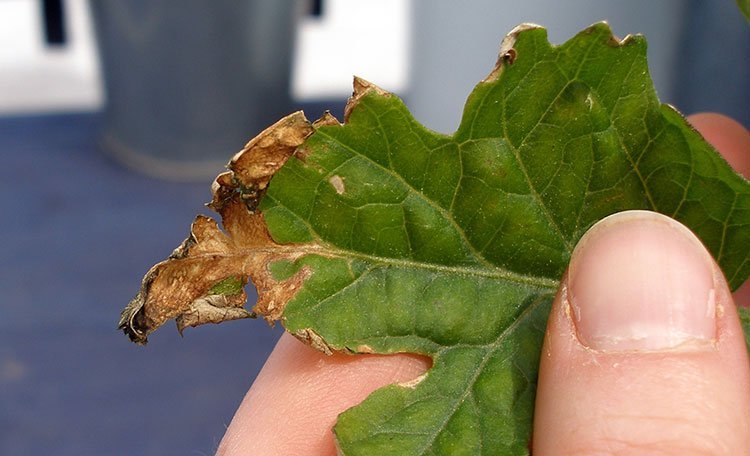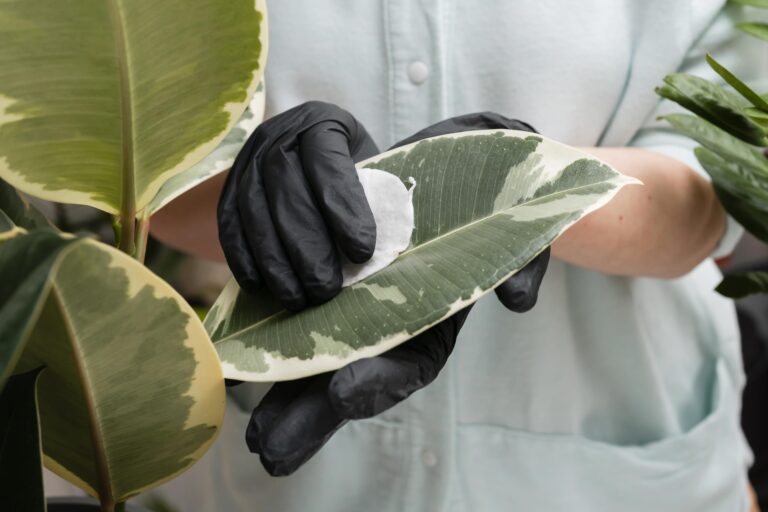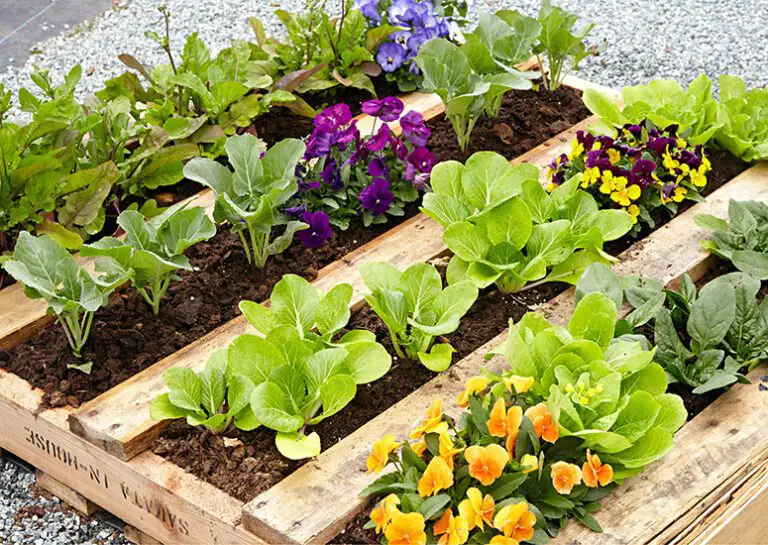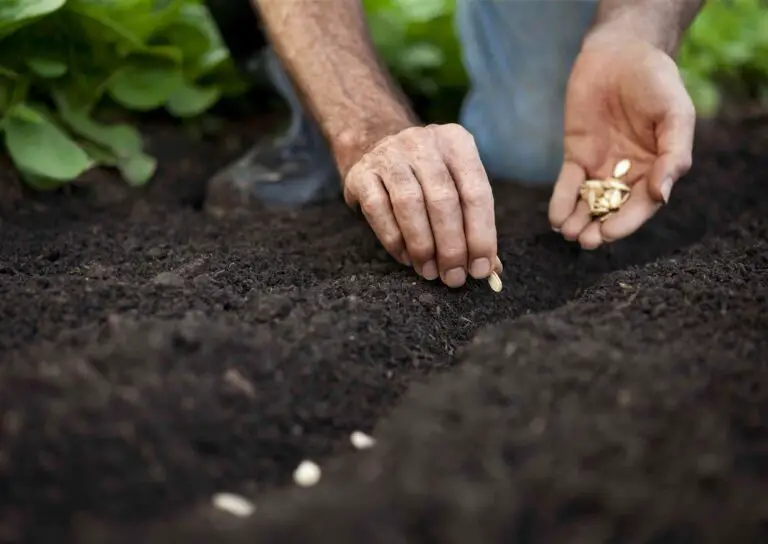Begonias: A Guide to Growing and Care
Hey there, plant enthusiasts! Did you know that begonias come in over 1,800 different species, making them a diverse and fascinating addition to any garden? If you’re looking to add a pop of color and elegance to your green space, begonias might just be the perfect choice. In this comprehensive guide, we’ll delve into the world of begonias, covering everything from planting and watering tips to common care mistakes to avoid. Whether you’re a seasoned gardener or a newbie with a green thumb, this blog will equip you with the knowledge and skills to nurture your begonias successfully. Let’s dive in and make your garden bloom with beauty!
Table of Contents
Understanding Begonias: An Overview of the Plant
Begonias are a popular choice for both indoor and outdoor gardening enthusiasts due to their vibrant blooms and ease of care. Here are the key points about begonias:
- Variety of Species: Begonias belong to the Begoniaceae family, which boasts over 1,800 species.
- Colorful Blooms: These flowering plants are celebrated for their vibrant blooms. The colors span from delicate pinks and whites to striking reds, oranges, and yellows.
- Size Range: Begonias come in different sizes. Some varieties grow low to the ground, while others can reach an impressive height of up to six feet.
In summary, begonias offer a delightful array of colors and sizes, making them a versatile choice for both indoor and outdoor gardens. 🌸🌿
“Everything you need to know about Begonias” is a comprehensive guide that serves as a valuable resource for beginners looking to delve into the world of begonias. The book covers various aspects of begonias, including different types, care tips, and propagation methods. While the guide lacks visual aids, it compensates with detailed information and troubleshooting advice. It offers a structured approach to understanding and cultivating begonias, making it a useful companion for those seeking to enhance their knowledge and skills in begonia care and cultivation.
- Comprehensive guide for beginners, covering various aspects of begonias.
- Detailed information on different types of begonias, their care, and propagation.
- Provides tips on how to choose the right begonias for your garden or home.
- Includes troubleshooting advice for common begonia issues.
- Lacks visual aids, such as images or videos, which could help beginners better understand the information.
- Does not provide personal experiences or anecdotes, which could make the guide more engaging.
- Limited interaction with readers, as it is a book and not a live resource.
The Different Varieties of Begonias and Their Unique Features
Begonias are a diverse group of flowering plants that offer a wide range of unique features. With over 1,800 species, begonias are known for their incredible variety and versatility. From delicate, trailing begonias ideal for hanging baskets to robust, upright varieties perfect for border plantings, there is a begonia to suit every garden style and preference.
The following table explain about the different varieties of Begonias and their unique features:
| Begonia Variety | Advantages | Disadvantages | Characteristics |
|---|---|---|---|
| Fibrous/Wax Begonias | – Classic garden variety | – Smaller flowers | – Lower lying annuals- Thick waxy leaves- Suitable for large masses and borders in garden beds- Tolerant of sun and drought |
| Tuberous Begonias | – Large, rose-like blooms | – Require more care | – Hanging or upright growth- Showy flowers in various colors- Ideal for containers and hanging baskets |
| Rex Begonias | – Stunning foliage patterns | – Challenging to propagate | – Variegated leaves with intricate designs- Grown primarily for foliage- Indoor or shaded outdoor use |
| Angel Wing Begonias | – Polka dot wing-leaves | – May require pruning | – Wing-shaped leaves with spots- Arching growth habit- Suitable for hanging baskets |
| Rhizomatous Begonias | – Diverse leaf shapes | – Slow growth | – Thick rhizomes for water storage- Varied leaf textures and colors- Low maintenance |
| Hardy Begonias | – Perennial varieties | – Frost-sensitive | – Tolerate shade and dappled sunlight- Die back in winter, return in spring- Suitable for USDA zones 10 and 11 |
These are just a few examples of the wide-ranging diversity within the begonia family. As you explore the world of begonias, you will discover an array of other unique varieties, each with its own distinctive characteristics. Whether you have a sunny or shady corner, a small urban balcony, or a sprawling landscape, there is a begonia variety that will thrive and enchant in your garden.
Selecting the Ideal Location for Growing Begonias
To ensure the healthy growth of begonias, selecting the ideal location is crucial. These plants thrive in environments with specific conditions. When choosing a location for your begonias, it is important to consider factors such as light, temperature, and humidity.

- Light Requirements: Begonias thrive in bright, indirect light or filtered sunlight. Avoid exposing them to direct sunlight for extended periods. Ideal locations include near windows with sheer curtains or shaded areas in the garden with dappled sunlight throughout the day.
- Temperature Considerations: Maintain temperatures between 65 to 75 degrees Fahrenheit (18 to 24 degrees Celsius) for optimal begonia growth. Avoid extreme temperature fluctuations and ensure consistent warmth. In colder regions, consider growing begonias in containers or bringing them indoors during winter to protect them from harsh conditions.
- Humidity Levels: Begonias prefer moderate to high humidity levels. To achieve this, place them in areas with good air circulation or use a humidifier if growing indoors. Be cautious of excessively dry or humid conditions, as they can stress begonias and make them more susceptible to diseases.
By carefully choosing the location for your begonias and providing them with the optimal light, temperature, and humidity, you will create an environment that promotes their healthy growth and vibrant blooms.
The Importance of Soil Preparation for Begonias
Soil preparation is a crucial step in ensuring the success of your begonia plants. The quality of the soil directly affects the growth, development, and overall health of these delicate plants. By adequately preparing the soil, you provide the necessary nutrients and conditions for begonias to thrive.
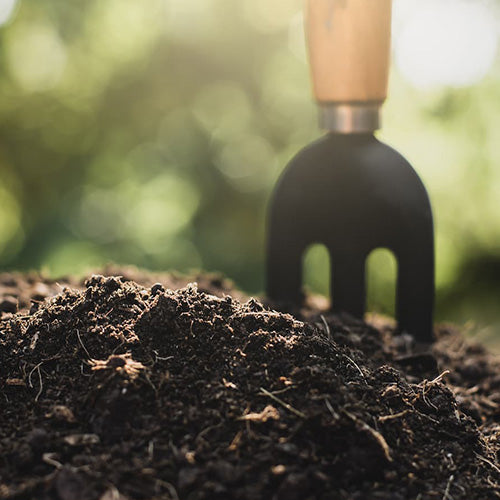
- Drainage: Proper drainage is crucial to prevent root rot. Begonias dislike waterlogged soil. To ensure good drainage:
- Incorporate organic matter like compost or well-rotted manure into the soil.
- These amendments not only improve drainage but also enhance the soil’s overall structure and nutrient-holding capacity.
- Acidic pH: Begonias thrive in slightly acidic soil with a pH range of 5.5 to 6.5:
- Test the soil’s pH using a pH meter or testing kit.
- If the pH is too high, consider adding elemental sulfur, pine needles, or peat moss to lower it to the optimal range for begonias.
Remember these guidelines to create an ideal environment for your begonias! 🌱🌸
In conclusion, proper soil preparation is vital for ensuring the health and vitality of your begonia plants. By creating well-draining soil and maintaining a slightly acidic pH level, you provide the perfect growing environment for these beautiful plants. Taking the time to prepare the soil adequately will greatly contribute to the long-term success of your begonia garden.
I recently purchased the CleanStraw 001 Pine Needles Mulch for my garden, and I must say, I’m quite impressed. The packaging was sturdy, and the product arrived promptly, which is always a plus when ordering online.Upon opening the package, I found the mulch to be of high quality, with long pine needles that looked fresh and natural. It added a beautiful aesthetic to my garden beds, giving them a rustic and earthy vibe.
One thing I appreciated was the easy application process. The mulch spread evenly and stayed in place, helping to retain moisture in the soil and suppress weed growth. Plus, it’s biodegradable, which aligns with my eco-friendly gardening practices.
Overall, I’m satisfied with my purchase of CleanStraw 001 Pine Needles Mulch. It not only enhances the appearance of my garden but also provides practical benefits for plant health. I would definitely recommend it to fellow gardeners looking for a reliable mulching solution.
✅ Effective Weed Control: Pine needle mulch is known for its ability to suppress weed growth. By creating a dense layer over the soil, it inhibits weed germination and reduces the need for manual weeding, saving time and effort for garden maintenance.
✅ Moisture Retention: Pine needles have excellent moisture retention properties. They help to conserve soil moisture by reducing evaporation, which is beneficial for plant health, particularly during hot and dry periods.
✅ Longevity: Pine needle mulch tends to break down slowly compared to other organic mulches, such as wood chips or straw. This means that it can provide long-lasting benefits to the soil and plants, reducing the frequency of mulch replacement.
❌ Potential for Compaction: Pine needle mulch may compact over time, especially if not replenished regularly. Compacted mulch can hinder water infiltration and air circulation in the soil, leading to drainage problems and root suffocation. Fluffing or turning the mulch occasionally can help mitigate compaction issues.
❌ Availability and Cost: Pine needle mulch may not be readily available in all areas, depending on local availability. Additionally, it can be more expensive compared to other types of mulch, such as wood chips or shredded leaves, due to the harvesting process and transportation costs associated with pine needles.
❌ Fire Hazard: Dry pine needles are flammable and can pose a fire hazard, particularly in regions prone to wildfires. Gardeners should take precautions to minimize the risk of mulch ignition, such as maintaining a defensible space around structures and avoiding placing mulch directly against buildings.
Watering Begonias: Finding the Right Balance
Watering begonias is a crucial aspect of their care, as it directly affects their growth and overall health. Finding the right balance in watering can be challenging, but with a few guidelines, you can ensure optimal conditions for your begonias.
- Overwatering Risks: Begonias are sensitive to overwatering, which can lead to root rot due to their delicate roots. Constantly soggy conditions should be avoided to prevent damage to the plant’s root system.
- Underwatering Effects: Insufficient watering can result in wilting and stunted growth in begonias. Finding the right balance between moisture and dryness is crucial for their health and vitality.
- Moisture Balance: Aim for consistently moist soil without allowing it to become waterlogged. This balance is essential to ensure the well-being of begonias.
- Watering Indicator: Use the “finger test” method to determine when to water begonias. Simply insert your finger into the top inch of soil – if it feels dry, it’s time to water the plant.
- Flexible Watering Approach: Avoid sticking to a fixed watering schedule as individual plant needs may vary based on factors like temperature, humidity, and pot size. Adjust watering frequency based on the specific conditions and needs of your begonias.
- Monitoring Soil Moisture: Regularly monitor the soil moisture levels to assess when watering is necessary. By staying attentive to the soil’s dryness, you can provide adequate hydration to your begonias and prevent issues related to over or underwatering.
By monitoring the soil moisture levels and adjusting your watering accordingly, you can effectively find the sweet spot and maintain a healthy balance for your begonias.
Fertilizing Begonias for Optimal Growth and Blooming
Begonias are known for their vibrant and showy blooms, captivating garden enthusiasts with their beauty. To ensure optimal growth and abundant flowering, proper fertilization is crucial. Fertilizing begonias provides essential nutrients that are necessary for their development and overall health.
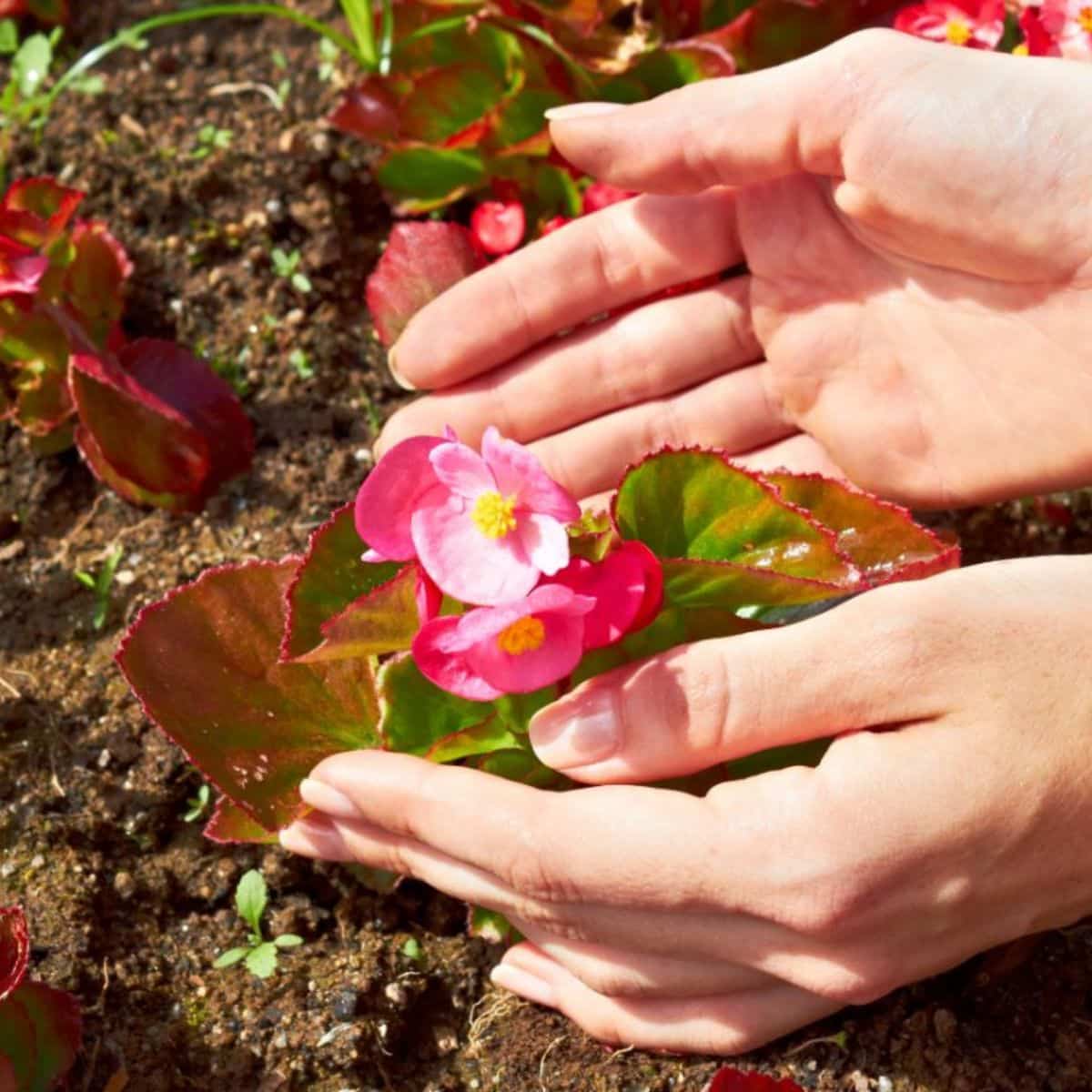
- Balanced Formulation: Choose a fertilizer specifically formulated for flowering plants. Look for a balanced ratio of nitrogen (N), phosphorus (P), and potassium (K), such as 10-10-10 or 20-20-20.
- Nutrient Blend: This balanced ratio ensures that begonias receive a well-rounded blend of nutrients, promoting both foliage growth and robust blooming.
- Application Guidelines:
- Follow the manufacturer’s instructions for proper dosage and frequency.
- Opt for a slow-release granular fertilizer to prevent over-fertilization and potential damage to the plants.
- Timing: Fertilize begonias during growing seasons, such as spring and summer, every four to six weeks for continuous growth and blooming.
Remember these tips to keep your begonias healthy and thriving! 🌱🌸
The following table explains about the fertilizing begonias for optimal growth and blooming:
| Fertilizer Type | N-P-K Ratio | Application Frequency | Application Rate |
|---|---|---|---|
| 1. Balanced Fertilizer | 10-10-10 | Every 4-6 weeks | 1/4 to 1/2 teaspoon per plant |
| 2. High-Potassium Fertilizer | 15-5-30 | Once a month | 1/4 teaspoon per plant |
| 3. Slow-Release Granular Fertilizer | Varies by product | Every 2-3 months | Follow manufacturer’s instructions |
| 4. Liquid Fertilizer (Diluted) | 20-20-20 | Every 2 weeks | Dilute according to label instructions |
Additionally, it is recommended to closely monitor the plants for signs of nutrient deficiencies or excesses, such as yellowing leaves, stunted growth, or burnt foliage. Adjusting the fertilizer application accordingly can help maintain a healthy balance and ensure optimal growth and blooming for your begonias.
Pruning and Pinching Begonias: Promoting Healthy Growth
Pruning and pinching are essential practices in maintaining the health and vitality of begonias. By employing these techniques, gardeners can encourage vigorous growth and stimulate more abundant flowering.
- Pruning Purpose: Pruning involves removing dead, damaged, or diseased parts of the begonia plant to enhance its appearance and promote better air circulation, reducing the risk of fungal infections.
- Energy Diversion: Removing wilted flowers or spent blooms during pruning prevents the plant from investing energy in seed production, allowing it to focus on new growth and development.
- Sterilized Tools: It is crucial to use sterilized tools when pruning to prevent the spread of disease. A clean cut just above a leaf node or bud is recommended to encourage new growth in the desired direction.
- Pinching Technique: Pinching entails selectively removing the growing tips of begonia stems to stimulate lateral branching, resulting in a bushier and fuller plant.
- Energy Redistribution: By pinching off the tips, the plant’s energy is redirected towards lateral growth rather than upward growth, promoting a more compact and attractive form.
- Optimal Timing: Pinching is typically done when the begonia is young and actively growing to encourage lateral branching. It is advisable to pinch just above a leaf node to stimulate the growth of two new branches from that point.
- Regular Maintenance: Regular pinching throughout the growing season helps maintain a well-branched and compact form, ensuring a more appealing display of flowers and foliage.
Propagating Begonias: Methods for Expanding Your Collection
Begonias are charming plants that can quickly become the centerpiece of any garden or indoor space. If you find yourself enamored with the beauty of begonias and desire to expand your collection, propagating them is an excellent way to do so.

Thankfully, there are several methods you can employ to increase your begonia population and delight in their vibrant blooms.
- Stem Cuttings: One of the most common and reliable methods for propagating begonias is through stem cuttings. This involves taking cuttings from existing stems and rooting them to grow new plants. Stem cuttings are considered an easy and effective way to expand your begonia collection.
- Rhizomatous Begonias: Rhizomatous begonias, known for their interesting and spectacular leaves, can be propagated through various methods. These begonias offer a wide range of sizes, colors, and textures, making them a popular choice for collectors looking to expand their collection.
By exploring stem cuttings, considering the unique characteristics of rhizomatous begonias, and utilizing informative video tutorials, you can successfully propagate begonias and grow your collection with a variety of species and hybrids. With proper care and attention, roots will develop, and a new begonia plant will emerge. These method is particularly beneficial for large begonias or species that have a more compact growth habit.
Dealing with Common Pests and Diseases that Affect Begonias
Common pests and diseases can wreak havoc on begonias if left unattended. These issues not only affect the plant’s appearance but also its overall health and vitality. Therefore, it is essential for gardeners to be proactive in dealing with these challenges to ensure the long-term success of their begonias.
| Issue | Symptoms | Treatment | Effects on Plant |
|---|---|---|---|
| Diseases | – Leaf Spot: Circular water-soaked areas with yellow halos on leaves. | – Remove infected leaves. | – Stunted growth; may lead to plant death. |
| – Bacterial Leaf Spot: Water-soaked areas with yellow rings on leaves. Stem rot may occur. | – Remove infected parts. | – Decline in health; potential death. | |
| – Powdery Mildew: White powdery patches on leaves. | – Improve air circulation. | – Reduced vigor; cosmetic damage. | |
| – Botrytis Blight: Gray mold on leaves and flowers. | – Remove affected parts. | – Decay of plant tissues. | |
| – Pythium Root Rot: Wilting, yellowing, and root decay. | – Improve drainage. | – Root damage; wilting. | |
| – Rhizoctonia Crown Rot: Dark, water-soaked stem base. | – Remove affected areas. | – Rotting at the base. | |
| Pests | – Greenhouse Whitefly: Tiny white insects on leaves. | – Insecticidal soap or neem oil. | – Weakened plant; honeydew secretion. |
| – Mites (Broad Mite and Begonia Mite): Rolled, brittle, discolored leaves. | – Miticides. | – Distorted growth; leaf damage. | |
| – Mealybugs: Cottony clusters on stems and leaves. | – Remove manually or use insecticidal soap. | – Weakening of plant. | |
| – Scale Insects: Brown, waxy bumps on stems and leaves. | – Remove with a soft brush or insecticidal oil. | – Reduced vigor; sap loss. | |
| – Nematodes: Stunted growth, yellowing, and wilting. | – Soil solarization or resistant varieties. | – Root damage; poor growth. | |
| – Slugs and Snails: Chewed leaves. | – Handpick or use traps. | – Cosmetic damage. |
Remember to promptly address these issues to keep your begonias healthy and thriving! 🌱🌸
Stay tuned for the next section on how to protect begonias from extreme temperatures and weather conditions.
Protecting Begonias from Extreme Temperatures and Weather Conditions
Protecting Begonias from extreme temperatures and weather conditions is essential for ensuring their healthy growth and survival. These delicate plants are particularly sensitive to extreme cold and excessive heat, which can cause irreparable damage if not properly addressed.Here are the key points for protecting begonias during different weather conditions:
- Winter Protection:
- Frost Blankets or Row Covers: Use these to shield begonias from freezing temperatures.
- Mulch: Place a layer of mulch around the base of begonias to insulate their roots.
- Monitor Weather Forecasts: Regularly check forecasts and take necessary precautions against sudden temperature drops or frost.
- Summer Heat Management:
- Shade: Provide shade during scorching months:
- Plant begonias in a location with partial shade.
- Use shade cloth to protect them from direct sunlight.
- Hydration: Ensure proper watering to prevent drought stress:
- Regularly water begonias.
- Monitor soil moisture levels.
- Shade: Provide shade during scorching months:
By following these guidelines, you’ll help your begonias thrive in various weather conditions! 🌱🌸 Taking these precautions will significantly reduce the risks of damage caused by extreme temperatures and weather conditions, ensuring the vitality and longevity of begonias in your garden.
Container Gardening with Begonias: Tips for Success
Container gardening with begonias can be a rewarding and visually stunning addition to any outdoor or indoor space. With their vibrant colors and unique foliage, begonias are a popular choice for those looking to beautify their patios, balconies, or even windowsills. To ensure success in your container gardening endeavors with begonias, here are a few tips to keep in mind.

- Choose the Right Container: Ensure the container has drainage holes to prevent soggy conditions, which can lead to root rot. The type of pot (plastic, terracotta, ceramic, metal, etc.) doesn’t matter, so pick a container that suits your style and complements the begonia’s color.
- Use Proper Soil: Begonias prefer light, fluffy, and well-draining soil. Use a potting soil that is specifically designed for container gardening, as it will provide the necessary drainage and aeration for the roots. You can also add perlite or vermiculite to improve drainage.
- Watering: Begonias are sensitive to overwatering, so it’s essential to find the right balance. Use the finger test to determine when to water: insert your finger into the top inch of soil – if it feels dry, it’s time to water. Avoid relying on a fixed watering schedule, as individual plant needs may vary based on factors such as temperature, humidity, and pot size.
- Light Requirements: Begonias thrive in bright, indirect light or filtered sunlight. Avoid exposing them to direct sunlight for extended periods, as this can lead to scorching and damage the leaves.
- Temperature and Humidity: Begonias prefer temperatures between 65 to 75 degrees Fahrenheit (18 to 24 degrees Celsius) and moderate to high humidity levels. To achieve this, place them in areas with good air circulation or use a humidifier if growing indoors. Be cautious of excessively dry or humid conditions, as they can stress begonias and make them more susceptible to diseases.
- Fertilizing: Use a balanced fertilizer mixed into the soil before planting and a water-soluble fertilizer about once a month for continuous blooming. This will provide the necessary nutrients for the plant to thrive and produce abundant flowers.
- Pinching and Pruning: Regularly pinch and prune your begonias to encourage bushier growth and prevent legginess. This will also help maintain a compact and well-branched form, ensuring a more attractive and abundant display of flowers.
- Pest and Disease Prevention: Regularly inspect your begonias for signs of pests or diseases and take appropriate measures to prevent or treat them. Maintaining good cultural practices such as providing proper water and fertilizer can help keep your begonias healthy and hydrated.
- Overwintering: If you live in a region with colder winters, it may be necessary to grow begonias in containers or bring them indoors during the colder months to protect them from frost.
- Repotting: When repotting begonias, choose a pot that is only slightly larger than the root ball. Make sure to sterilize the pot before planting to prevent the spread of disease.
By following these tips, you can create a beautiful and thriving container garden with begonias.Remember, begonias prefer well-draining soil to prevent waterlogged roots. By carefully considering the container and soil, you contribute to an environment conducive to healthy begonia growth.
Seasonal Care for Begonias: Adjusting Practices for Different Times of the Year
As seasons change, so do the care practices for begonias. Understanding the adjustments needed for different times of the year is crucial for maintaining healthy and vibrant plants.
| Seasonal Care for Begonias | Adjustments |
|---|---|
| Spring | – Start begonias indoors and move them outside after the last frost. – Provide bright filtered light and protect from strong winds. – Inspect tubers for sprouts and buds, and plant them concave side up. – Water when the soil surface starts to dry out. – Feed with half-strength water-soluble fertilizer every 10-14 days. – Watch for pests like slugs, snails, and stem rot. – Prune flower buds to encourage larger blooms. – Remove browning leaves for better air circulation. |
| Summer | – Ensure begonias receive partial sun and ideal temperature conditions. – Water frequently but avoid overwatering to prevent root rot. – Fertilize every two weeks in pots and containers to promote new growth. – Deadhead spent blooms to encourage continuous flowering. – Watch for diseases like powdery mildew and pests like mealybugs and spider mites. – Provide humidity for indoor begonias. |
| Fall | – Prepare for overwintering by reducing water to tuberous begonias until they go dormant. – Clean and store tubers in a warm, dry place. – Inspect stored tubers for rot and discard any soft ones. – Move tubers with buds to a warmer location and handle sprouted tubers with care. – Water sparingly until new growth appears. – Avoid soggy conditions to prevent root rot. – Watch for bacterial and fungal problems indoors. |
| Winter | – Overwinter begonias indoors to protect them from frost. – Maintain temperatures between 65°F to 73°F during the day and over 55°F at night. – Increase humidity with pebble trays or humidifiers to adjust to drier indoor air. – Water when the top inch of soil becomes dry, avoiding overwatering. – Clean leaves periodically to remove dust. – Watch for pests and diseases, especially in indoor conditions. – Consider using grow lights if natural light is insufficient. |
Troubleshooting Common Problems in Begonia Care
Begonias are typically easy to care for, but like any plant, they can encounter certain problems. If you notice your begonias displaying signs of distress, it’s crucial to identify the issue and provide appropriate treatment.
overwatering
One of the most common problems is overwatering. Begonias are sensitive to excessive moisture, and their roots can easily rot if sitting in soggy soil. Ensure that the soil is well-draining and never allow water to accumulate in the saucer beneath the pot. Additionally, avoid watering the foliage, as this can lead to fungal diseases. Instead, direct the water towards the base of the plant.
pests
Another issue that begonias may encounter is pests. Aphids, mites, and mealybugs are some of the common culprits. If you notice small, sucking insects on the leaves or stems, take action immediately to prevent further damage. You can start by using a spray bottle filled with soapy water to wash away the pests. For more severe infestations, consider using a horticultural oil or insecticidal soap. These products are effective against a wide range of pests and will help eliminate the problem without harming the plant. Regularly inspect your begonias for any signs of pests, as early detection and treatment are crucial in preventing the issue from spreading.
Enhancing Begonia Blooms: Tips for Maximizing Flowering

Begonias are known for their stunning blooms, and if you want to maximize the flowering potential of these beautiful plants, there are a few key tips to keep in mind.
Sunlight Requirement:
- Begonias thrive in bright, indirect light.
- Ensure they receive a minimum of six hours of filtered sunlight daily.
Watering Guidelines:
- Strike a balance to avoid issues: too little water causes wilting, while excessive water leads to root rot.
- Check soil moisture by feeling the top inch; if dry, it’s time to water.
- Avoid letting the soil completely dry out between waterings.
- Provide regular moisture to support healthy growth and vibrant blooms.
Providing regular moisture without overwatering will help your begonias flourish and produce vibrant, long-lasting blooms.
Creating Stunning Begonia Displays: Companion Planting Ideas
When it comes to creating stunning displays with begonias, companion planting can be a game-changer. By carefully selecting and pairing compatible plants, you can enhance the beauty and overall aesthetic appeal of your begonia garden.

Whether you mix them with begonias of contrasting colors or create a monochromatic display, the begonia and lobelia erinus duo is guaranteed to captivate the eye and leave a lasting impression.
Growing Begonias Indoors: Tips for Successful Indoor Gardening
Growing begonias indoors can be a rewarding and enjoyable experience for any gardening enthusiast. With the right approach and attention to detail, you can create a thriving indoor garden filled with these exquisite plants. To help you achieve success, here are some essential tips for successful indoor gardening with begonias.

Select Suitable Begonia Varieties:
- Choose indoor-friendly types like Rex begonias or Iron Cross begonias.
- Consider factors such as lighting, temperature, and humidity tolerance.
- Mimic natural habitat conditions for optimal growth.
Provide Adequate Lighting:
- Place begonias in areas with bright indirect light.
- Optimal locations include near north or east-facing windows.
- Supplement with artificial light sources if natural light is limited.
- Adjust duration and intensity of light as needed for specific begonia varieties.
Master Proper Watering Techniques:
- Avoid overwatering to prevent root rot and diseases.
- Underwatering can lead to withering of the plants.
- Water when the top inch of soil feels dry.
- Ensure pots have proper drainage to prevent waterlogging.
- Consider occasional misting to increase humidity levels, beneficial for many begonia varieties.
In the following segments, we will delve deeper into the details of creating an ideal environment for begonias, from soil preparation and fertilization to pruning and pinching techniques. Stay tuned to learn more about the fascinating world of indoor begonia gardening and how you can maximize the beauty and vitality of these stunning plants.
Watch video for more information:
fAQ
Can begonias be grown indoors all year round?
Yes, begonias can be grown indoors all year round as long as they receive adequate light, water, and proper care.
Can I grow begonias in low light conditions indoors?
While begonias prefer bright, indirect light, there are some varieties that can tolerate lower light conditions. However, blooming may be reduced or limited in such environments.
What is the ideal temperature range for growing begonias indoors?
Begonias thrive in temperatures between 65°F (18°C) and 75°F (24°C). They generally do not tolerate temperatures below 60°F (15°C) or above 80°F (27°C).
How often should I water my indoor begonias?
The frequency of watering depends on factors such as the size of the pot, the type of begonia, and the temperature and humidity of the environment. Generally, it is recommended to water begonias when the top inch of soil feels dry.
Can I use tap water to water my begonias?
It is best to use filtered or distilled water for begonias, as the chemicals and minerals in tap water can be harmful to the plant. If tap water is the only option, allow it to sit for 24 hours to allow chlorine to dissipate.
How often should I fertilize my indoor begonias?
Begonias benefit from regular fertilization during their active growth period. Generally, a balanced, water-soluble fertilizer can be applied every 2-4 weeks, following the package instructions for dilution and application.
Can I propagate begonias indoors?
Yes, begonias can be easily propagated indoors through methods such as stem cuttings or leaf cuttings. This allows you to expand your collection and create new plants.
What are some common pests and diseases that affect indoor begonias?
Common pests that can affect indoor begonias include aphids, mealybugs, and spider mites. Some common diseases include powdery mildew and botrytis blight. Regular inspection and proper care can help prevent and manage these issues.
How can I protect my indoor begonias from extreme temperatures?
Keep begonias away from drafty windows or doors to avoid exposure to extreme cold or heat. You can also use curtains or blinds to regulate temperature and protect the plants.
Can I grow begonias in hanging baskets indoors?
Yes, begonias can be grown in hanging baskets indoors. Choose trailing or cascading varieties for a beautiful display, and ensure the basket has proper drainage to prevent waterlogging.
Can I use artificial lighting for growing begonias indoors?
Yes, you can use artificial lighting, such as fluorescent or LED grow lights, to supplement or provide the necessary light for indoor begonias. Position the lights close to the plants and adjust the duration according to their light requirements.
How can I encourage more blooms on my indoor begonias?
To encourage more blooms, provide your begonias with adequate light, maintain proper watering and fertilization, and ensure they are in the appropriate temperature range. Deadhead spent flowers to redirect energy towards new blooms.
Are there any companion plants that go well with begonias?
Begonias can be paired with various companion plants to create stunning displays. Some suitable options include impatiens, coleus, ferns, and ivy. Ensure the companion plants have similar light and water requirements.

Studied Agricultural Engineering-Plant Protection at University of California, Davis.
Head of Content writing team at Southelmontehydroponics.com

